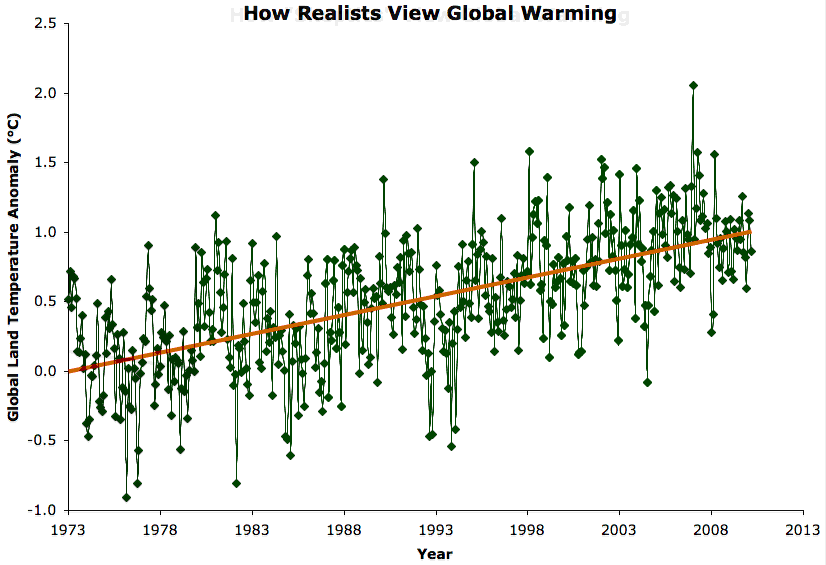If the Earth’s temperature was the same year after year, then the effects of increasing greenhouse gases would be very easy to spot. Unfortunately, Mother Nature rarely makes things that easy to figure out. Besides the daily and seasonal cycles, we also have decadal temperature swings caused by the sunspot cycle and ocean/atmospheric oscillations. This tends to confuse non scientists, and fools many into believing claims that global warming has stopped. The Heartland Int. in Chicago (political think tank) has long been a major purveyor of this silliness.
John Cook, at Skeptical Science, has posted an incredible graphic that dispels this myth all by itself. This myth is very widespread, and if you google “global cooling” and you will see a plethora of web sites telling you the warming has ended and the planet is cooling. Those that believe this sort of thing will usually show a graph of temperatures to support it, but that graph will always cover just a few years. The image above shows why they do it that way; It’s kind of like saying that spring is cancelled because of an April cold snap!
Skeptical Science has an in-depth post that goes along with the graphic, and I highly recommend reading it. I’ll finally get to meet John Cook (at the December AGU conference) in San Francisco! He’s done an amazing job of showing the true science and dispelling the ubiquitous myths, that sound scientific, but are really just politics in disguise. Read it, and next time you’ll know when someone is giving you political belief dressed up to look like science.
Read more:AGU Blogosphere | Dan's Wild Wild Science Journal | Dispelling An Enduring Myth With One Image:



